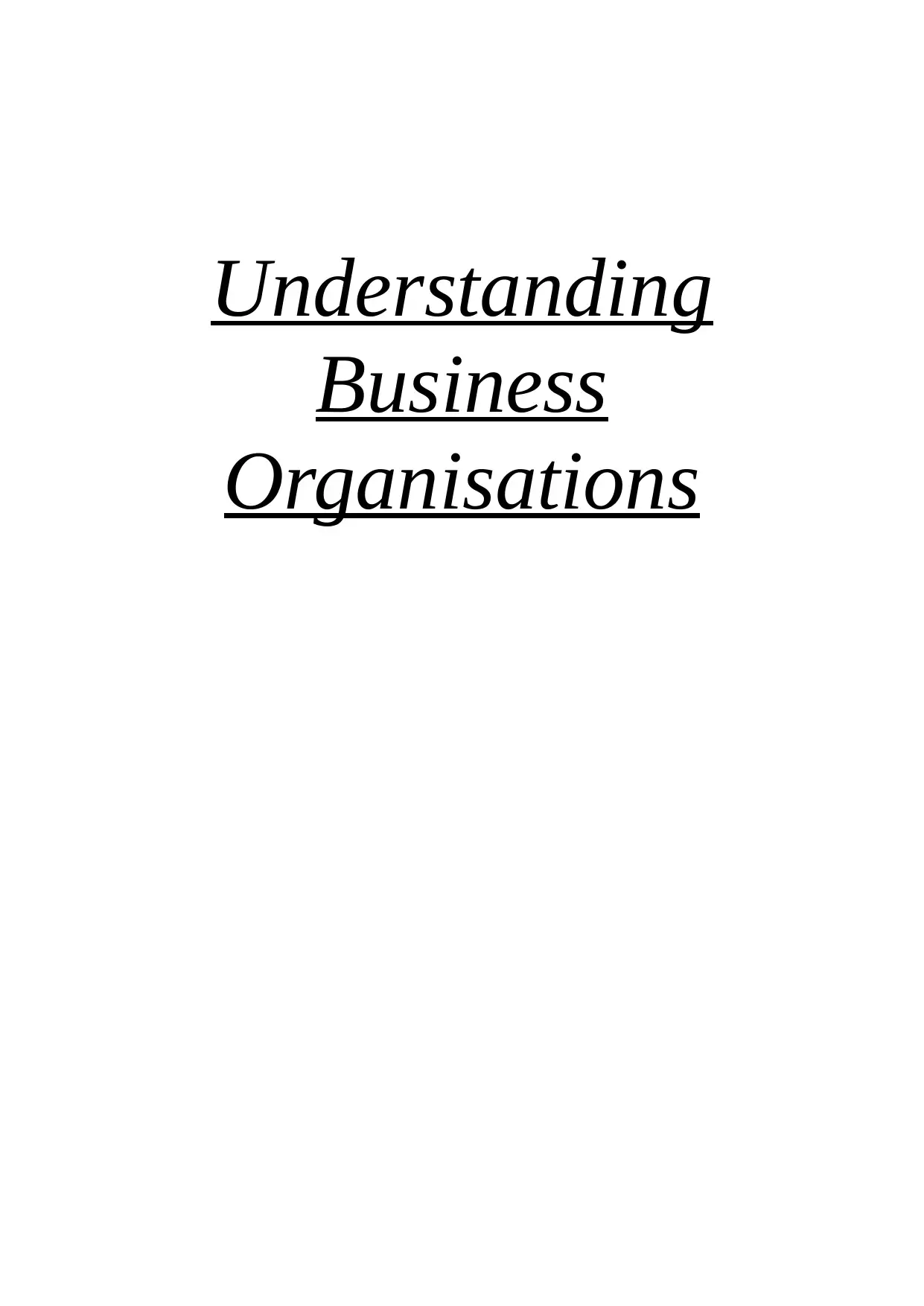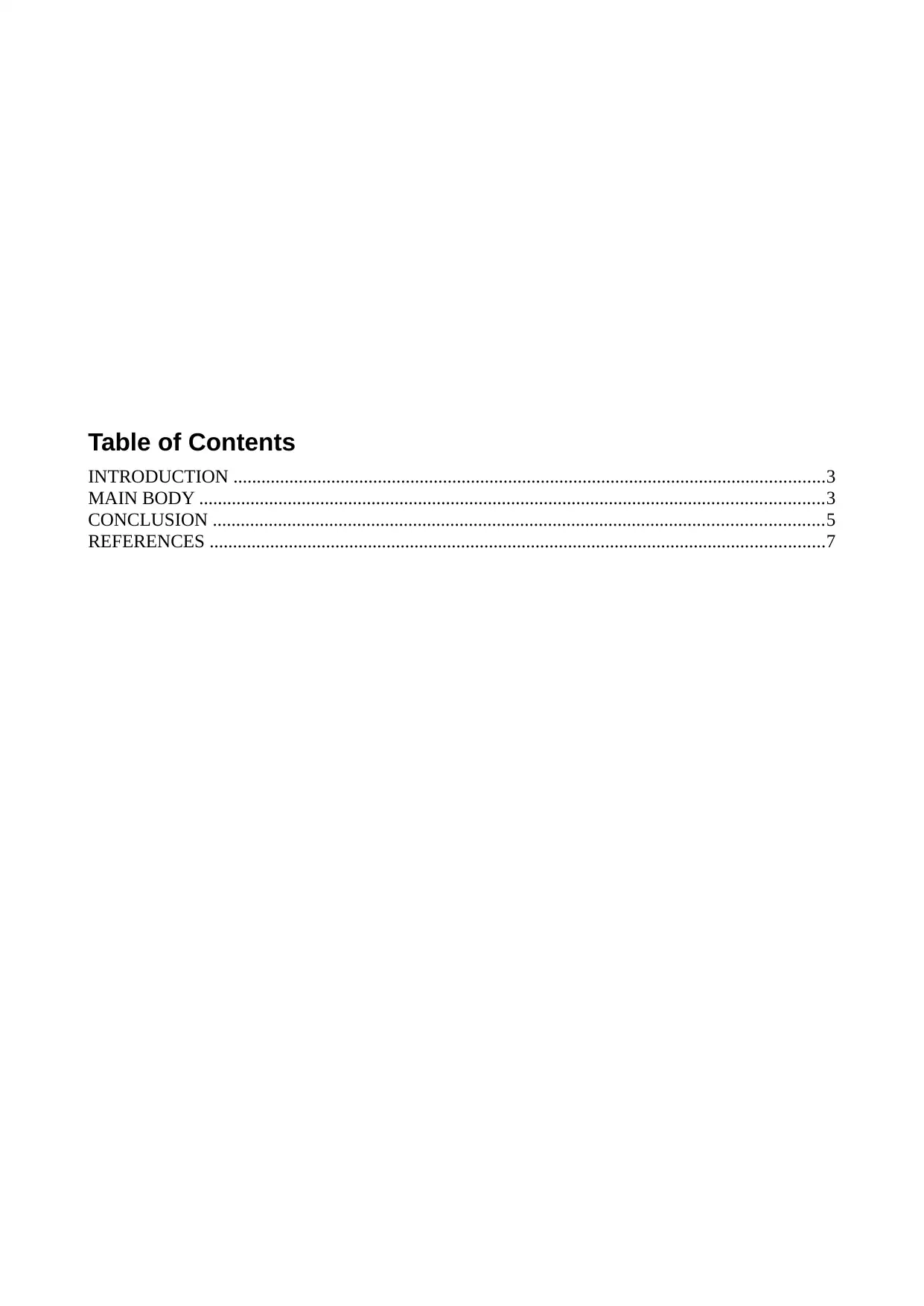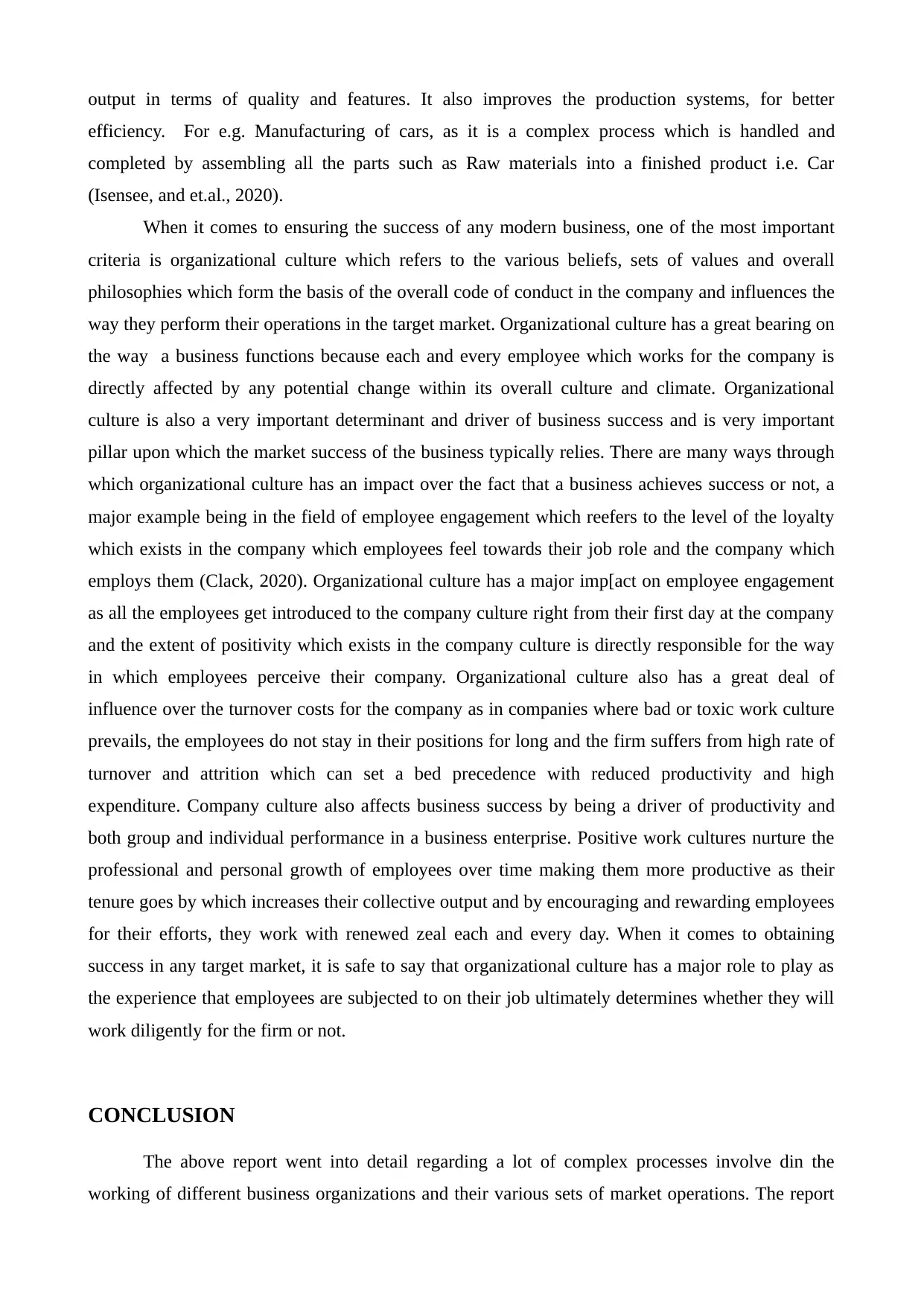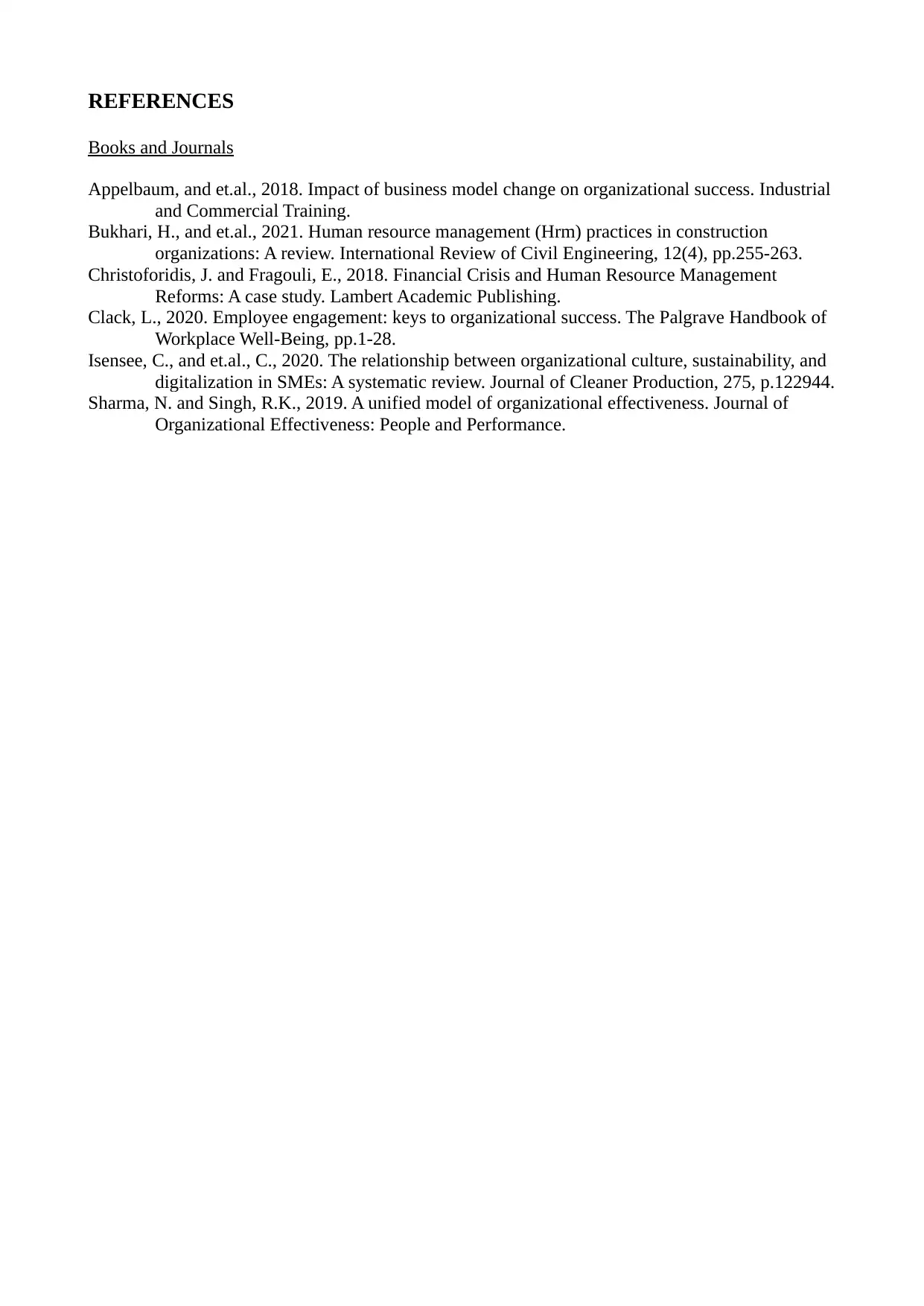Business Organisations: Structures, Culture, and Functions Report
VerifiedAdded on 2023/06/10
|7
|1875
|330
Report
AI Summary
This report provides a comprehensive overview of business organisations, exploring various types such as sole traders, partnerships, and limited companies, along with their respective advantages and disadvantages. It delves into the structural components of organisations, differentiating between tall and flat structures, and highlighting examples like Hilton Hotels and British Airways. The report further examines essential business functions, including human resources and production, and emphasizes the significance of organisational culture in driving business success. It discusses how culture influences employee engagement, turnover costs, and overall productivity, concluding that a positive work environment and streamlined operations are critical for achieving market success. The report references academic journals and books to support its findings.

Understanding
Business
Organisations
Business
Organisations
Paraphrase This Document
Need a fresh take? Get an instant paraphrase of this document with our AI Paraphraser

Table of Contents
INTRODUCTION ...............................................................................................................................3
MAIN BODY ......................................................................................................................................3
CONCLUSION ...................................................................................................................................5
REFERENCES ....................................................................................................................................7
INTRODUCTION ...............................................................................................................................3
MAIN BODY ......................................................................................................................................3
CONCLUSION ...................................................................................................................................5
REFERENCES ....................................................................................................................................7

INTRODUCTION
The term business organisation refers to a company which is owned and managed by an
individual or a group of individuals. It may have one or more than one business, but the firm cannot
have more than one organisation as they both are inseparable from each other. A business has many
benchmarks and targeted goals which the business organisation wants to accomplish over a
particular period of time so as to achieve success in the long run (Appelbaum, and et.al., 2018). In
this essay, different types of organisations will be discussed like, sole trader, partnership, limited
company etc. along with their advantages and disadvantages and further more, the functions of
business and its culture will also be highlighted in this essay.
MAIN BODY
A sole trader is an organisation which is owned and managed by an individual. Usually all
the basic and complex operations are performed by an individual only. The sole proprietor's are
independent in terms of enjoying the benefits, and has to bear the loss by themselves only. They are
freelancers, contractors. The advantages of sole proprietors can be stated as they make all the
decision and the company is in full control of them. It is also considered as the easiest and the least
expensive form of an organisation. It also has its disadvantages too, as no separate legal status is
there, and the personal assets are at risk if anything happens in the business. The term partnership is
a type of organisation in which two or more than two people shares the control of a single business.
The partners should came up with a mutual agreement to form such company. The advantages of
partnership is that it is easy to establish and has a separate legal status but profit sharing and divided
decision making are also the disadvantages of the partnership. The next is a limited liability
company, which is a mixed business structure having limited liability and flexibility to perform the
operations of the business (Sharma and Singh, 2019). The formation of this firm is considered to be
more complex than the other organisations, it also requires a lot of paperwork and legal permissions
to form the company. the advantages can be described as the unlimited number of owners, and the
separate identity, but it also have its disadvantages too, like it can be very costly to form, and it also
requires the legal and accounting assistance. The yearly administrative costs of the company is also
high.
An organisation has two structural components namely tall structure and flat structure. A tall
structure can be defined as the one having many leaders and the management system is also
hierarchical here, which uses the top-down authority approach. This structure has many levels of
The term business organisation refers to a company which is owned and managed by an
individual or a group of individuals. It may have one or more than one business, but the firm cannot
have more than one organisation as they both are inseparable from each other. A business has many
benchmarks and targeted goals which the business organisation wants to accomplish over a
particular period of time so as to achieve success in the long run (Appelbaum, and et.al., 2018). In
this essay, different types of organisations will be discussed like, sole trader, partnership, limited
company etc. along with their advantages and disadvantages and further more, the functions of
business and its culture will also be highlighted in this essay.
MAIN BODY
A sole trader is an organisation which is owned and managed by an individual. Usually all
the basic and complex operations are performed by an individual only. The sole proprietor's are
independent in terms of enjoying the benefits, and has to bear the loss by themselves only. They are
freelancers, contractors. The advantages of sole proprietors can be stated as they make all the
decision and the company is in full control of them. It is also considered as the easiest and the least
expensive form of an organisation. It also has its disadvantages too, as no separate legal status is
there, and the personal assets are at risk if anything happens in the business. The term partnership is
a type of organisation in which two or more than two people shares the control of a single business.
The partners should came up with a mutual agreement to form such company. The advantages of
partnership is that it is easy to establish and has a separate legal status but profit sharing and divided
decision making are also the disadvantages of the partnership. The next is a limited liability
company, which is a mixed business structure having limited liability and flexibility to perform the
operations of the business (Sharma and Singh, 2019). The formation of this firm is considered to be
more complex than the other organisations, it also requires a lot of paperwork and legal permissions
to form the company. the advantages can be described as the unlimited number of owners, and the
separate identity, but it also have its disadvantages too, like it can be very costly to form, and it also
requires the legal and accounting assistance. The yearly administrative costs of the company is also
high.
An organisation has two structural components namely tall structure and flat structure. A tall
structure can be defined as the one having many leaders and the management system is also
hierarchical here, which uses the top-down authority approach. This structure has many levels of
⊘ This is a preview!⊘
Do you want full access?
Subscribe today to unlock all pages.

Trusted by 1+ million students worldwide

management. The relationship between the managers and the employees are quite formal here, with
having a balanced and effective communication system. The top level management holds the full
power over the employees of the organisation, in this structure. The next structure is called the flat
structure, which is quite differentiated from the first one, as the it involves few level of management
as compared to the tall structure, it also encourages more power to the employees in the decision
making process, as it is not limited to the top management staff. This structure is not that critical or
complex, also the relationship among the employees and the management is harmonious here,
following the informal chain of communication. Both of the structures differs from each other in
many ways like, the hierarchical and the tall organisational structure is mostly adopted by mature
companies, because the operations,tasks and accountability should be extremely cleared, avoiding
any confusion or mistake (Bukhari, and et.al., 2021). For e.g. Hilton hotels and resorts is one of the
largest and popular brans among the hospitality chains in the world following the hierarchical
structure of the organisation, due to its massive size and complex operations. The brand has division
of ownership, containing more than 146 hotels owned by the Hilton group only. The authoritative
chain is top-down here which is followed strictly. The senior level managements holds the power of
decision making and handling other operations, due to its formal chain of management. The flat
structure is mainly opted by the organisations, which wanted themselves to stay close to their
customers and have a less need of hierarchical management system. e.g., British airways is a well
known travel agency of United kingdom, which follows the flat structure of organisation,
containing small level of management but a wide level of control among the organisation. It also
provides power of autonomy in the process of decision making and interact with its customers by
knowing about their experiences and preferences through feedbacks because of its customer focused
business. This structure is very beneficiary in improving the communication and coordination
among the organisation
The business requires many functional departments such as, Human resources, production,
operations etc. to run its operations effectively. The human resource department (HR) is basically
related with the management of people, dealing with the recruitment, selection and motivation of
the employees in the organisation. The Production department takes the charge of converting raw
materials into finished goods, i.e. conversion of inputs into outputs so as to make them ready for the
sale in the market (Christoforidis and Fragouli, 2018). The production process in the small business
is carried by the same person only and each function of the business will be looked after by the
entrepreneur himself or herself. In Mature business organisations, the production operations are
managed very carefully, as they are directly related with the process of delivering services to the
targeted customers. This functional department is focused to transform the inputs into the best of its
having a balanced and effective communication system. The top level management holds the full
power over the employees of the organisation, in this structure. The next structure is called the flat
structure, which is quite differentiated from the first one, as the it involves few level of management
as compared to the tall structure, it also encourages more power to the employees in the decision
making process, as it is not limited to the top management staff. This structure is not that critical or
complex, also the relationship among the employees and the management is harmonious here,
following the informal chain of communication. Both of the structures differs from each other in
many ways like, the hierarchical and the tall organisational structure is mostly adopted by mature
companies, because the operations,tasks and accountability should be extremely cleared, avoiding
any confusion or mistake (Bukhari, and et.al., 2021). For e.g. Hilton hotels and resorts is one of the
largest and popular brans among the hospitality chains in the world following the hierarchical
structure of the organisation, due to its massive size and complex operations. The brand has division
of ownership, containing more than 146 hotels owned by the Hilton group only. The authoritative
chain is top-down here which is followed strictly. The senior level managements holds the power of
decision making and handling other operations, due to its formal chain of management. The flat
structure is mainly opted by the organisations, which wanted themselves to stay close to their
customers and have a less need of hierarchical management system. e.g., British airways is a well
known travel agency of United kingdom, which follows the flat structure of organisation,
containing small level of management but a wide level of control among the organisation. It also
provides power of autonomy in the process of decision making and interact with its customers by
knowing about their experiences and preferences through feedbacks because of its customer focused
business. This structure is very beneficiary in improving the communication and coordination
among the organisation
The business requires many functional departments such as, Human resources, production,
operations etc. to run its operations effectively. The human resource department (HR) is basically
related with the management of people, dealing with the recruitment, selection and motivation of
the employees in the organisation. The Production department takes the charge of converting raw
materials into finished goods, i.e. conversion of inputs into outputs so as to make them ready for the
sale in the market (Christoforidis and Fragouli, 2018). The production process in the small business
is carried by the same person only and each function of the business will be looked after by the
entrepreneur himself or herself. In Mature business organisations, the production operations are
managed very carefully, as they are directly related with the process of delivering services to the
targeted customers. This functional department is focused to transform the inputs into the best of its
Paraphrase This Document
Need a fresh take? Get an instant paraphrase of this document with our AI Paraphraser

output in terms of quality and features. It also improves the production systems, for better
efficiency. For e.g. Manufacturing of cars, as it is a complex process which is handled and
completed by assembling all the parts such as Raw materials into a finished product i.e. Car
(Isensee, and et.al., 2020).
When it comes to ensuring the success of any modern business, one of the most important
criteria is organizational culture which refers to the various beliefs, sets of values and overall
philosophies which form the basis of the overall code of conduct in the company and influences the
way they perform their operations in the target market. Organizational culture has a great bearing on
the way a business functions because each and every employee which works for the company is
directly affected by any potential change within its overall culture and climate. Organizational
culture is also a very important determinant and driver of business success and is very important
pillar upon which the market success of the business typically relies. There are many ways through
which organizational culture has an impact over the fact that a business achieves success or not, a
major example being in the field of employee engagement which reefers to the level of the loyalty
which exists in the company which employees feel towards their job role and the company which
employs them (Clack, 2020). Organizational culture has a major imp[act on employee engagement
as all the employees get introduced to the company culture right from their first day at the company
and the extent of positivity which exists in the company culture is directly responsible for the way
in which employees perceive their company. Organizational culture also has a great deal of
influence over the turnover costs for the company as in companies where bad or toxic work culture
prevails, the employees do not stay in their positions for long and the firm suffers from high rate of
turnover and attrition which can set a bed precedence with reduced productivity and high
expenditure. Company culture also affects business success by being a driver of productivity and
both group and individual performance in a business enterprise. Positive work cultures nurture the
professional and personal growth of employees over time making them more productive as their
tenure goes by which increases their collective output and by encouraging and rewarding employees
for their efforts, they work with renewed zeal each and every day. When it comes to obtaining
success in any target market, it is safe to say that organizational culture has a major role to play as
the experience that employees are subjected to on their job ultimately determines whether they will
work diligently for the firm or not.
CONCLUSION
The above report went into detail regarding a lot of complex processes involve din the
working of different business organizations and their various sets of market operations. The report
efficiency. For e.g. Manufacturing of cars, as it is a complex process which is handled and
completed by assembling all the parts such as Raw materials into a finished product i.e. Car
(Isensee, and et.al., 2020).
When it comes to ensuring the success of any modern business, one of the most important
criteria is organizational culture which refers to the various beliefs, sets of values and overall
philosophies which form the basis of the overall code of conduct in the company and influences the
way they perform their operations in the target market. Organizational culture has a great bearing on
the way a business functions because each and every employee which works for the company is
directly affected by any potential change within its overall culture and climate. Organizational
culture is also a very important determinant and driver of business success and is very important
pillar upon which the market success of the business typically relies. There are many ways through
which organizational culture has an impact over the fact that a business achieves success or not, a
major example being in the field of employee engagement which reefers to the level of the loyalty
which exists in the company which employees feel towards their job role and the company which
employs them (Clack, 2020). Organizational culture has a major imp[act on employee engagement
as all the employees get introduced to the company culture right from their first day at the company
and the extent of positivity which exists in the company culture is directly responsible for the way
in which employees perceive their company. Organizational culture also has a great deal of
influence over the turnover costs for the company as in companies where bad or toxic work culture
prevails, the employees do not stay in their positions for long and the firm suffers from high rate of
turnover and attrition which can set a bed precedence with reduced productivity and high
expenditure. Company culture also affects business success by being a driver of productivity and
both group and individual performance in a business enterprise. Positive work cultures nurture the
professional and personal growth of employees over time making them more productive as their
tenure goes by which increases their collective output and by encouraging and rewarding employees
for their efforts, they work with renewed zeal each and every day. When it comes to obtaining
success in any target market, it is safe to say that organizational culture has a major role to play as
the experience that employees are subjected to on their job ultimately determines whether they will
work diligently for the firm or not.
CONCLUSION
The above report went into detail regarding a lot of complex processes involve din the
working of different business organizations and their various sets of market operations. The report

included discussions on various forms of business organizational structures such as sole trading and
partnerships which is the most followed organization in real life practice in modern UK, defining
tall and flat structures such as the top to down hierarchical structures often followed by leading
hospitality companies such as the Hilton group. The report also discusses impact of company
culture on business success and it was concluded that in order to truly succeed, firms must have
streamlined operations, positive work culture and a flatter structure which can all be found in
companies like IBM and Tesla which rule their respective market segments.
partnerships which is the most followed organization in real life practice in modern UK, defining
tall and flat structures such as the top to down hierarchical structures often followed by leading
hospitality companies such as the Hilton group. The report also discusses impact of company
culture on business success and it was concluded that in order to truly succeed, firms must have
streamlined operations, positive work culture and a flatter structure which can all be found in
companies like IBM and Tesla which rule their respective market segments.
⊘ This is a preview!⊘
Do you want full access?
Subscribe today to unlock all pages.

Trusted by 1+ million students worldwide

REFERENCES
Books and Journals
Appelbaum, and et.al., 2018. Impact of business model change on organizational success. Industrial
and Commercial Training.
Bukhari, H., and et.al., 2021. Human resource management (Hrm) practices in construction
organizations: A review. International Review of Civil Engineering, 12(4), pp.255-263.
Christoforidis, J. and Fragouli, E., 2018. Financial Crisis and Human Resource Management
Reforms: A case study. Lambert Academic Publishing.
Clack, L., 2020. Employee engagement: keys to organizational success. The Palgrave Handbook of
Workplace Well-Being, pp.1-28.
Isensee, C., and et.al., C., 2020. The relationship between organizational culture, sustainability, and
digitalization in SMEs: A systematic review. Journal of Cleaner Production, 275, p.122944.
Sharma, N. and Singh, R.K., 2019. A unified model of organizational effectiveness. Journal of
Organizational Effectiveness: People and Performance.
Books and Journals
Appelbaum, and et.al., 2018. Impact of business model change on organizational success. Industrial
and Commercial Training.
Bukhari, H., and et.al., 2021. Human resource management (Hrm) practices in construction
organizations: A review. International Review of Civil Engineering, 12(4), pp.255-263.
Christoforidis, J. and Fragouli, E., 2018. Financial Crisis and Human Resource Management
Reforms: A case study. Lambert Academic Publishing.
Clack, L., 2020. Employee engagement: keys to organizational success. The Palgrave Handbook of
Workplace Well-Being, pp.1-28.
Isensee, C., and et.al., C., 2020. The relationship between organizational culture, sustainability, and
digitalization in SMEs: A systematic review. Journal of Cleaner Production, 275, p.122944.
Sharma, N. and Singh, R.K., 2019. A unified model of organizational effectiveness. Journal of
Organizational Effectiveness: People and Performance.
1 out of 7
Related Documents
Your All-in-One AI-Powered Toolkit for Academic Success.
+13062052269
info@desklib.com
Available 24*7 on WhatsApp / Email
![[object Object]](/_next/static/media/star-bottom.7253800d.svg)
Unlock your academic potential
Copyright © 2020–2025 A2Z Services. All Rights Reserved. Developed and managed by ZUCOL.


